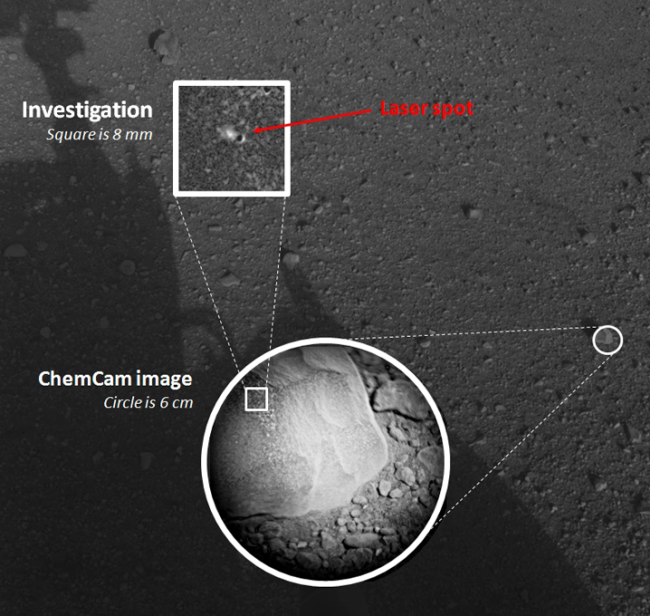Pictured: The NASA Mars Science Laboratory, named Curiosity, is controlled by the Space Flight Operations Center at the Jet Propulsion Laboratory in California
While hardly the Death Star, the Mars Curiosity Rover has achieved for itself the honour of blasting the first rock on any extraterrestrial planet by a laser, NASA has confirmed.
NASA has released images of what the Curiosity Rover’s laser gun – known as ChemCam (Chemistry and Camera).
Yesterday (19 August) while most people were taking it easy or enjoying their Sunday dinner a fist-sized piece of rock named ‘Coronation’ for the occasion was zapped.
Thirteen days after landing on Mars, the Earth’s destructive capabilities were visited on Coronation, which hitherto for billions of years lay undisturbed.
The unwitting rock was hit with 30 pulses of laser during a 10-second period.
Each pulse delivered a payload of more than 1m watts of power for about five one-billionths of a second.
“The energy from the laser excited atoms in the rock into an ionised, glowing plasma,” NASA gushed proudly.

The magnified views in the insets come from ChemCam’s camera, the Remote Micro-Imager. The area shown in the circular inset is 6 centimeters (2.4 inches) in diameter. It was taken before the rock was hit with the laser. The area covered in the further-magnified square inset is 8 millimeters (about one-third of an inch) across. It combines information from images taken before and after the test, subtracting the “before” image from the “after” image to make the changes in the rock visible.
Galactic target practice
“This initial use of the laser on Mars served as target practice for characterising the instrument but may provide additional value,” NASA explained.
“Researchers will check whether the composition changed as the pulses progressed. If it did change, that could indicate dust or other surface material being penetrated to reveal different composition beneath the surface.” NASA said.
The ChemCam laser was developed, built and tested by the US Department of Energy’s Los Alamos National Laboratory in partnership with scientists and engineers funded by France’s national space agency, Centre National d’Etudes Spatiales (CNES) and research agency, Centre National de la Recherche Scientifique (CNRS).
NASA Mars Science Laboratory image via Shutterstock